Semiconductor Wafer Fab Equipment (WFE) Market Growth Overview and Growth Factors Details by Regions, Types & Applications. Semiconductor Wafer Fab Equipment Market Trends & Insights by 2020
Semiconductor wafer fabrication is defined as process for production of photonic and electrical circuits which include LEDs, RF (radio frequency) amplifiers, and, optical computer components. Wafer fabrication helps in building components with required electrical structures.
Wafer fabrication process is done for processing raw wafers to finished chips (discrete or integrated circuits). Traditional wafer fabrication process involves individual steps for resistors, transistors, conductors, and other electronic components processing on the semiconductor wafer.
Semiconductor equipment plays a vital role in IC manufacturing which are located in fab, a manufacturing facility. Thus, semiconductor wafer fabrication is used to create circuits which are used in electronic and electrical devices.
In semiconductor device fabrication, a wide range of processes are used to transform a “bare silicon” wafer to a circuit. These processes include PVD/CVD (physical or chemical vapor deposition), RTP (rapid thermal processing) plasma etch, photolithography, and CMP (chemical-mechanical planarization).
Semiconductor wafer fabrication involves sequential steps of chemical and photolithographic processes which create a semiconductor device. Semiconductor device fabrication involves four steps which include processes ranging from deposition, removal to modification of electrical properties.
Silicon is used to make wafers while fabrication is done. Silicon is melted, purified, and cooled to form an “ingot” which is further cut into wafers.
To ensure the quality of semiconductor wafer fabrication equipment, a wafer test is done to monitor damages caused to the wafer. It helps in analyzing whether the processing can continue or not.
Factors such as growing demand from consumer electronics industry, and increasing technological advancements in telecom and semiconductor sector are expected to drive the demand for semiconductor wafer fab equipment market during the forecast period. Other factors such as demand for silicon wafer, equipment footprint would help in analyzing semiconductor wafer fab equipment market in future.
Moreover, innovation in wafer technologies which have led to “denser packaging” of devices such as MEMS (micro-electro-mechanical system) and transistors are expected to create foundation for new opportunities which can be leveraged by companies.
Semiconductor wafer fab equipment market is segmented on the basis of wafer fabrication process, application, wafer size, and end-user. Further classification of wafer fabrication processing includes FEOL (front-end-of-line) processing, and BOEL (back-end-of-line) processing.
FEOL processing is the prime stage of IC fabrication in which devices such as capacitors, and resistors, among others are amalgamated in the circuit. BEOL is the second phase of fabrication which interconnects devices on the wafer with wiring.
Based on end-user the segment is classified as telecom, retail, healthcare, and banking and financial services, among others. According to the wafer size, classification includes wafers sizes such as 150 mm, 200 mm, and 300 mm.
Semiconductor wafer fab equipment have varied applications for consumer audio/video and entertainment products, smart phone, television, pagers, PC peripherals, copiers, and automotive parts.
Some of the market players in the semiconductor wafer fab equipment market include Intel, TSMC (Taiwan Semiconductor Manufacturing Company), Motorola, Samsung, and Lam Research, among others. For instance, Motorola announced the launch of its first wafer processing plant in China.
The technologies developed would be used to “fabricate ICs for cellular phones” in China.
This study by TMR is all-encompassing framework of the dynamics of the market. It mainly comprises critical assessment of consumers’ or customers’ journeys, current and emerging avenues, and strategic framework to enable CXOs take effective decisions.
Our key underpinning is the 4-Quadrant Framework EIRS that offers detailed visualization of four elements:
- Customer Experience Maps
- Insights and Tools based on data-driven research
- Actionable Results to meet all the business priorities
- Strategic Frameworks to boost the growth journey
The study strives to evaluate the current and future growth prospects, untapped avenues, factors shaping their revenue potential, and demand and consumption patterns in the global market by breaking it into region-wise assessment.
News From
 Transparency Market Research…
Transparency Market Research…Category: Market Research Publishers and Retailers Profile: Transparency Market Research is a global market intelligence company, providing global business information reports and services. Our exclusive blend of quantitative forecasting and trends analysis provides forward-looking insight for thousands of decision makers. Our experienced team of Analysts, Researchers, and Consultants, use proprietary data sources and various tools and techniques to gather, and analyze information.
This email address is being protected from spambots. You need JavaScript enabled to view it.

